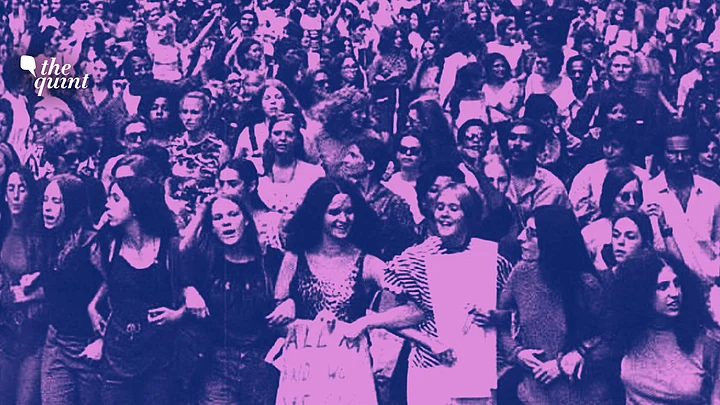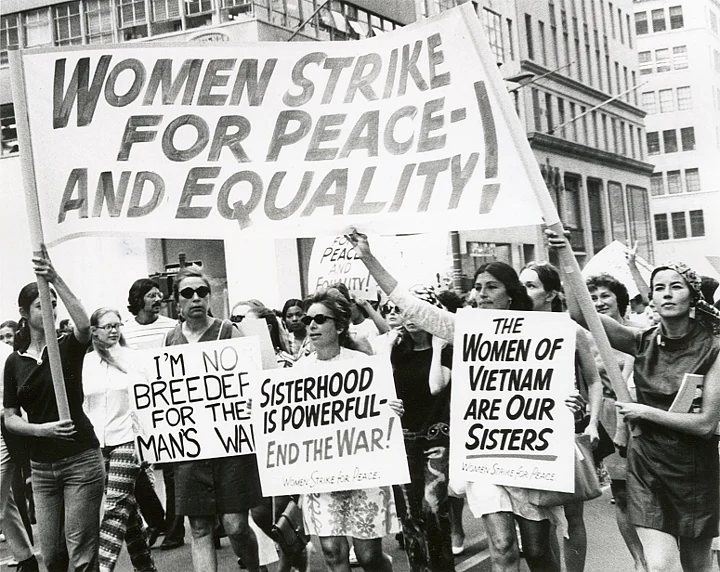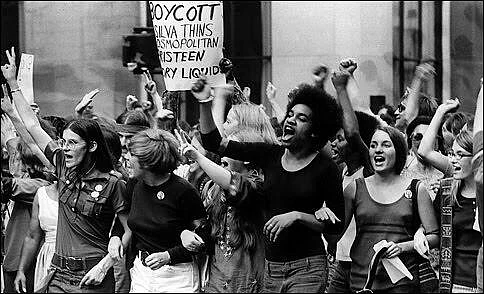“What is the good of your feeling that you are now so mature that this relationship can’t do you any harm?…You are far too soft, and this is something I have got to correct, for what one of us does will also be charged to the other’s account. You are my precious little woman and even if you make a mistake, you are none the less so…. But you know all this, my sweet child…”Sigmund Freud in a letter to his fiancé Martha Bernays
Here, take a peak at what one of the greatest minds of the 20th Century wrote to his fiancé, gently chiding her for keeping up her friendship with a woman whom he disapproved of. This was in 1885, so excuse me my rude shock when whilst reading Betty Friedan’s The Feminine Mystique I realise this is the exact tone several of the ‘woke’ boyfriends and husbands still take with their ‘precious little women’. It’s been over a hundred years and men are still happily infantilising their partners.
Women’s Strike for Equality
What progress have we made in the intervening century? Let’s zoom into a historic day in the fight against the tyranny of men: It is 26 August 1970, and Betty Friedan, one of the loudest voices of the second wave of feminism, is leading over 50,000 women down New York City’s Fifth Avenue during rush hour. What are they fighting for? Let’s raise the volume a little. Shouts of ‘Give us free abortion on demand’, ‘We want equal opportunity in education and employment’, and ‘More 24x7 childcare centres!’ can be distinctly heard.
This was the famous Women’s Strike for Equality March exactly 51 years ago today. The droves of (sub)urban American women were successful in furthering their goals. But only so much. The problem (that had no name) that inspired Friedan to write The Feminine Mystique in 1963 still is a stark reality for the housewives in today’s urban India – there’s no disputing that. But what about the working woman, whom Friedan had triumphed as the lodestar of a better future? How different does she have it?
The Feminine Mystique: What is It? Do You & I Deal With It?
In her book, Friedan detailed the sexual counter-revolution of the feminine mystique, which did great harm to the position that the American woman had begun to carve out for herself only a few decades ago. What is the feminine mystique? And has it jostled its way into the 21st Century, like many other issues facing women and other genders?
The feminine mystique, Friedan said, was society’s assumption that to find ‘feminine fulfilment’ a woman had to subsume herself in her role as a mother and a wife. Marrying young and filling the house with cherubic children was to achieve the pinnacle of modern, post-war life. Finding this confinement of women in domestic life bizarre, Friedan called out the masochistic passivity that characterised femininity in her time – which is relevant to this day. Let’s break it down.
'THE MASCULINITY COMPLEX'
To show how femininity was equated with passivity and masculinity with activity, in sexual and other spheres of life, Friedan quotes psychoanalyst Helene Deutsch, who in 1944 wrote: “Very often a woman resists this characteristic given to her by nature and in spite of certain advantages she derives from it, displays many modes of behavior that suggest that she is not entirely content with her own constitution…the expression of this dissatisfaction, combined with attempts to remedy it, result in woman’s 'masculinity complex'”.
“The image of woman that emerges from this big, pretty magazine is young and frivolous, almost childlike; fluffy and feminine; passive; gaily content in a world of bedroom and kitchen, sex, babies, and home,” says Friedan on analysing several issues of McCall’s, a famous women’s magazine.
Why do I stop myself short from asserting that this is not how women are portrayed in popular culture today?
(THE TRAP OF) MARRIAGE & MOTHERHOOD
In her analysis of the prevalent image of women in the 1960s, Friedan says: “The magazine surely does not leave out sex; the only passion, the only pursuit, the only goal a woman is permitted is the pursuit of a man.”
You might not be expected to fill the house with aforementioned cherubic children, but two… one at least? C’mon, don’t you want to experience ‘real womanhood’?
As I inch towards the big Three-O, single and happier than I have ever been, there is that frequent nudge of ‘What about marriage? As you get older, all the good ones will be taken...’
Hello, miss, are you sure all the ones who are already taken are actually any good?
The Feminine Mystique & the Forfeited Self
When the feminine mystique was at its peak in Friedan’s America, one of its driving forces was the psychoanalytical theories of Freud. Yes, the very same man who was gently chiding his child bride in the beginning of our saga.
Freud’s concept of ‘penis envy’ helped in boiling down all and any attempts by women to puncture their oppressive reality to a feeling of lack felt by them in relation to men. Freud, for whom ‘anatomy was destiny’, failed to recognise how his cultural lens blurred his view, how he mistook ‘nurture’ for ‘nature’. Women, he said, were meant to find their fulfilment in being a wife and a mother, a destiny readied for them by their ‘inferior’ biology.
THE DENIAL OF GROWTH
In contrast to Freud, Abraham Maslow, whom Friedan quotes extensively, explains how there is a hierarchy of needs in humans. How the emergence of later (and higher) needs is based on the fulfillment of the basic physiological needs. A person living in constant danger will not feel the need to stimulate their mind. It’s only a person whose basic needs – food and security – are being met, who will be able to give thought to their psychological needs.
The American housewife of the 1950-60s definitely was having her basic needs met, but as her identity was defined only in relation to her husband and children, her pathway to the recognition of these higher needs was blocked. With denial of serious education and employment and reduced to her sexual function, she was “stunted at a lower level of living, blocked from the realisation of her higher human needs.”
Friedan talks at length about this forfeited self of the woman. She quotes Maslow as saying, “Capacities clamor to be used, and cease their clamor only when they are well used. That is, capacities are also needs. Not only is it fun to use our capacities, but it is also necessary. The unused capacity or organ can become a disease center or else atrophy, thus diminishing the person.”
The Solution to the 'Problem That Has No Name'
While Friedan glorifies the role that work plays in a self-actualising person’s life, she cautions not to mistake a job, which might or might not fulfil one, for a career.
Friedan says, “For the problem that has no name, from which so many women in America suffer today, is caused by adjustment to an image that does not permit them to become what they now can be.” How I wish this statement didn’t immediately remind me of the high (and impossible!) standards of beauty I encounter with every click on the internet.
“The transcendence of self, in sexual orgasm, as in creative experience, can only be attained by one who is himself, or herself, complete, by one who has realized his or her own identity.”Betty Friedan in 'The Feminine Mystique'
How shall we do that? That’s another 1,500 words altogether!




